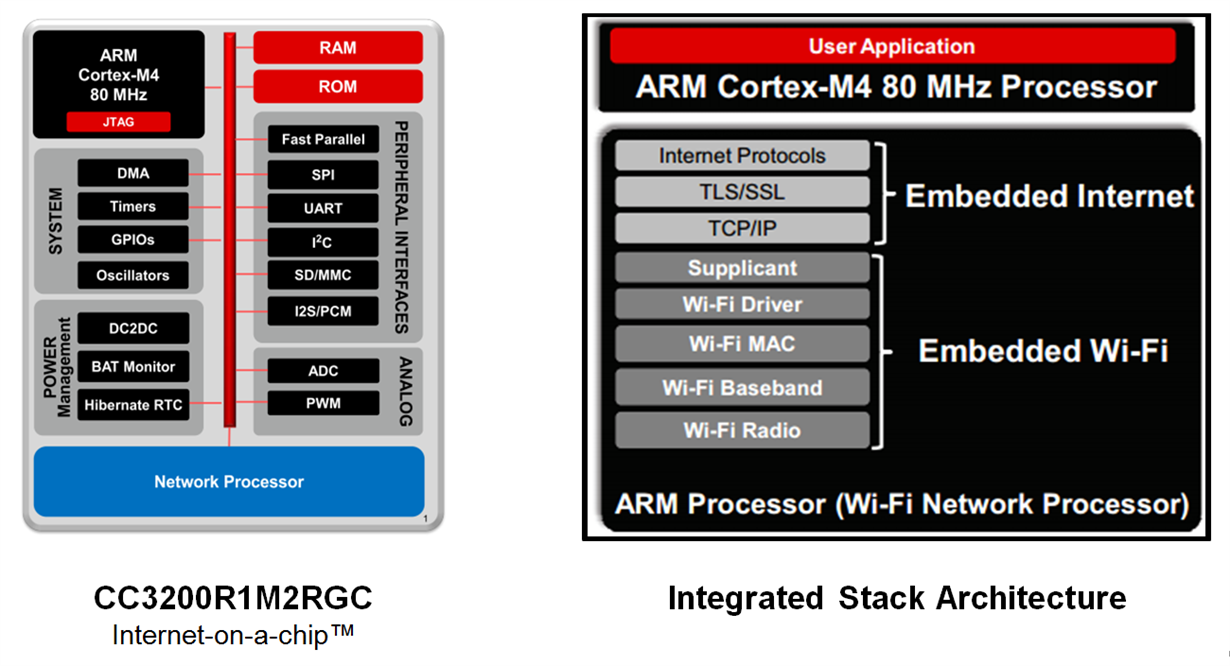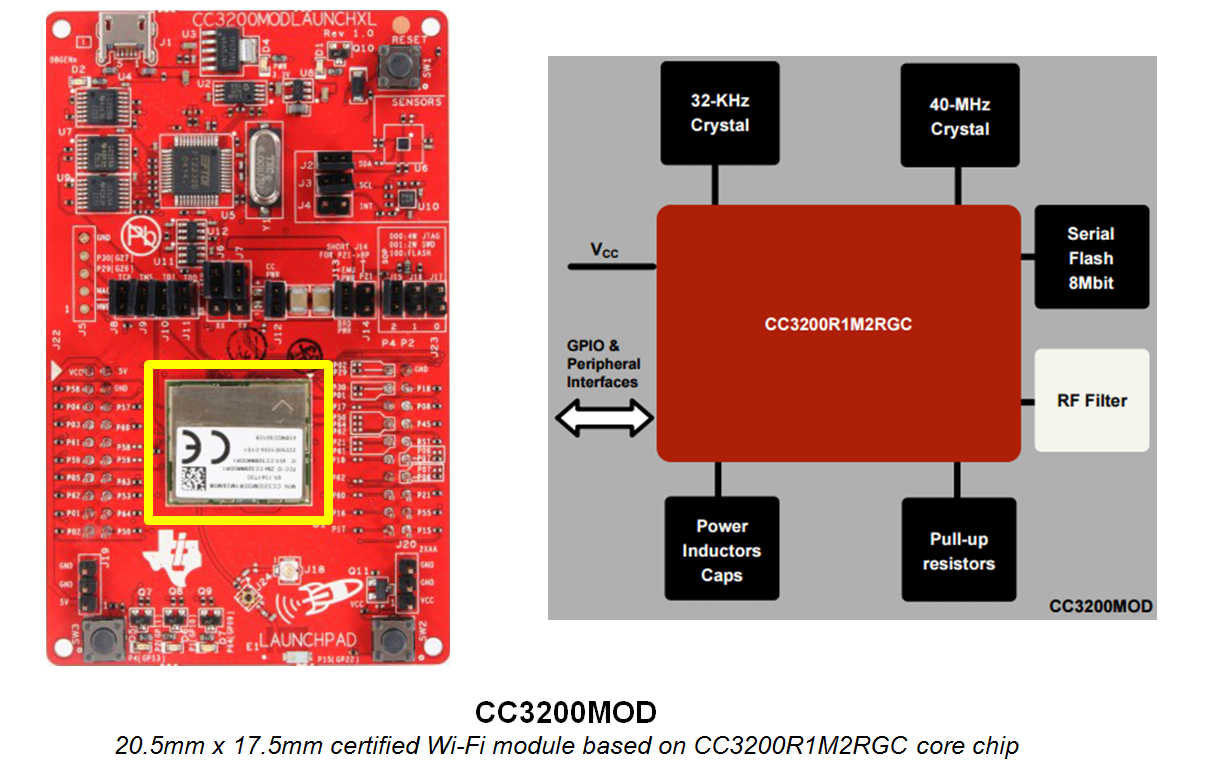SSZTAL8 november 2016 CC3200 , CC3200MOD
What Challenges Exist for Integrating Wi-Fi® into IoT Applications?
Because of these constraints, Wi-Fi technology must exhibit the below attributes to be considered for IoT designs:
- Simple software architecture
- Straightforward RF hardware
- Small footprint
- Low power consumption
- Global certification
- Low system cost
How does this benefit the designer?
- Eliminates the need for:
- Expert Wi-Fi software stack engineer
- RF hardware designer
- Antenna designer
- Reduces certification, compliance and testing costs
- Enables pocket sized Wi-Fi experiences
- Delivers more than one year of battery life on two AA batteries
- Reduces cost of Wi-Fi module to under $10
What’s Holding Back the Wi-Fi Design?

This legacy design has been a challenge for many software engineers as they work to resolve stack compatibility, power management and version control issues, which are especially prevalent when the Wi-Fi transceiver and MCU come from different vendors. Software teams should keep in mind that selecting the desired MCU first will significantly limit available options for compatible Wi-Fi transceivers; and failing to find a suitable upper stack forces teams to spend weeks porting the stack onto the selected MCU, followed by months testing and certifications.
The two-chip architecture also poses issues for applications that require low power modes while Wi-Fi is enabled. Although a low speed Wi-Fi stack typically operates at less than 40 MIPS (million instructions per second), the host MCU is forced to remain active instead of sleeping. As a result, the product becomes impractical to operate with battery power.
The Internet-on-a-chip™ Integrated Circuit

Breaking down the structure further, this MCU’s single-chip design includes two on-chip MCUs, a programmable application-dedicated 80MHz ARM Cortex-M4 core with 256KB of RAM, many different peripheral interfaces, a 12-bit analog-to-digital converter and a network processor dedicated to managing Wi-Fi and internet connectivity. This configuration frees up the core to operate an end user’s applications while the network processor independently operates an integrated Wi-Fi stack. Through this architecture, the chip is able to directly interface with a wide range of sensors, actuators and other digital systems.
Using this approach also makes version control much easier, no longer requiring interoperability controls between the upper and lower stacks. For example, operating system (OS) version changes on the host MCU have no effect on the independent version and operation of the device, even though the MCU is part of the same chip.
This single chip solution is offered both as an easy to integrate QFN-package IC, and also as a fully-certified plug-and-play module. The SimpleLink Wi-Fi CC3200MOD module (highlighted in the yellow box below) is the industry’s first programmable FCC, IC, CE, TELEC and Wi-Fi certified module. Out of the box, this component saves on system cost and accelerates time-to-market by eliminating the expensive and lengthy certification processes.
With a CC3200R1M2 at its core, this
20.5mm x 17.5mm module includes all necessary clocks, flash memory and passives to
deliver a complete solution in a single package. 
By significantly reducing power consumption requirements for end applications, the internet-on-a-chip architecture makes Wi-Fi integration an easy choice for countless end equipments. Stay tuned for the next installment where we will detail a few use cases for incorporating this solution into your designs; and check out these links to learn more about the SimpleLink Wi-Fi family and Low-power Internet connectivity over Wi-Fi®.